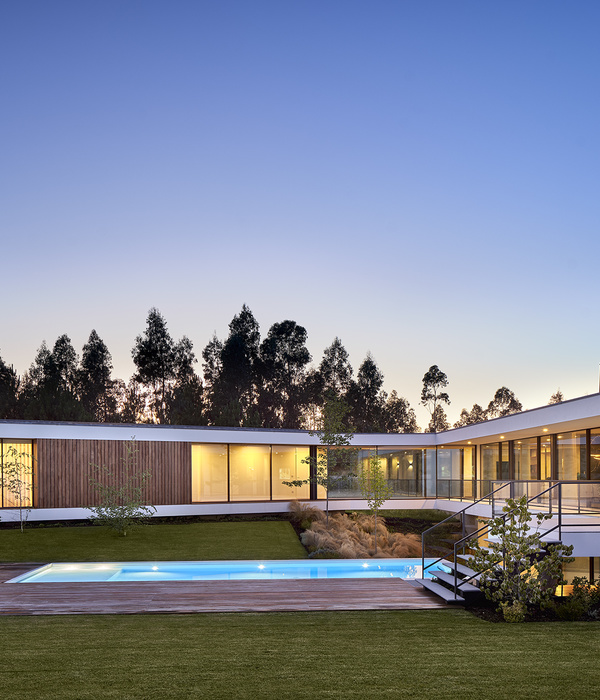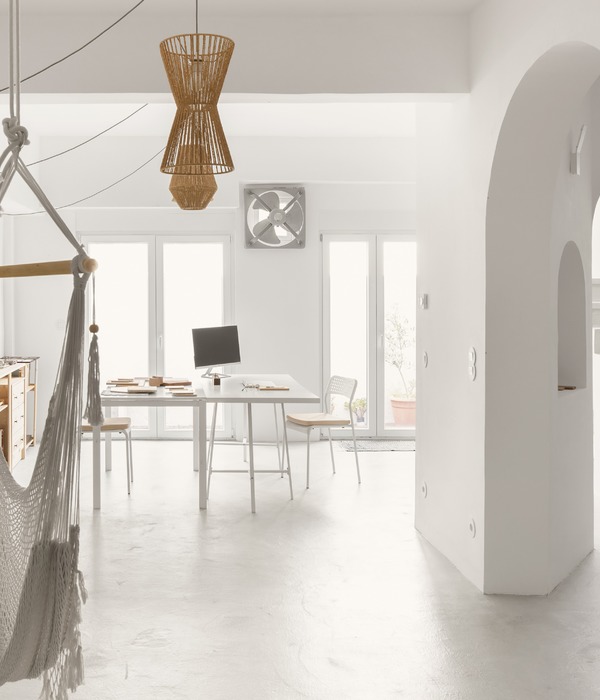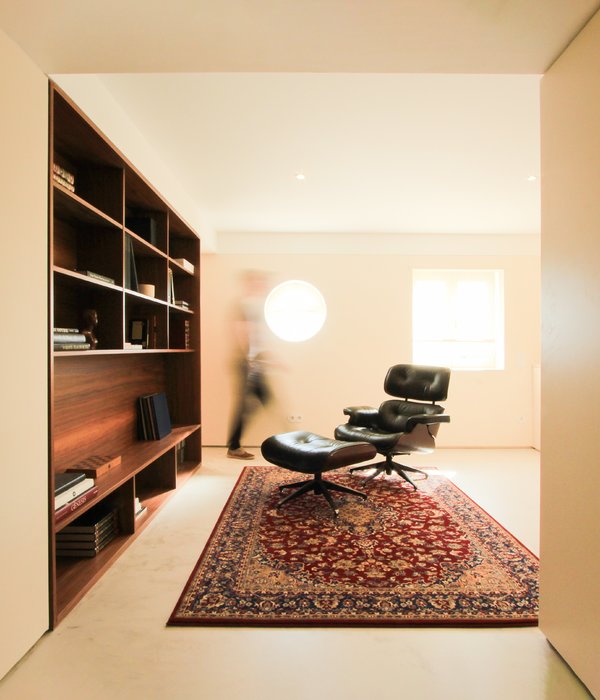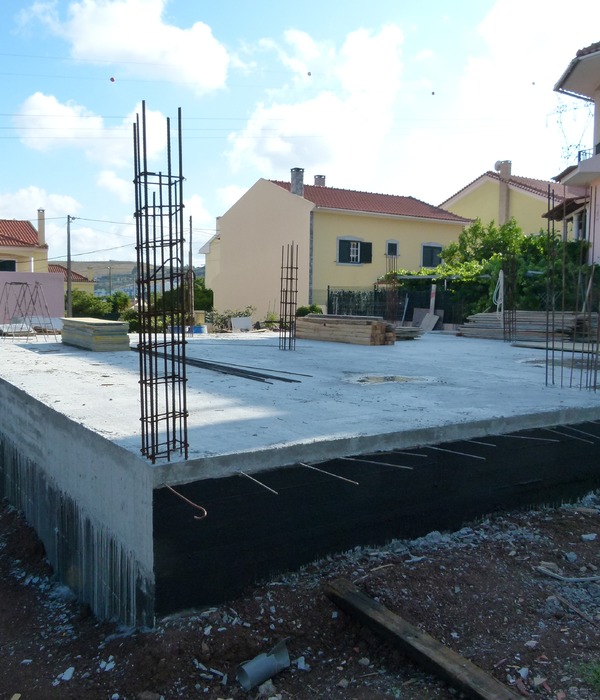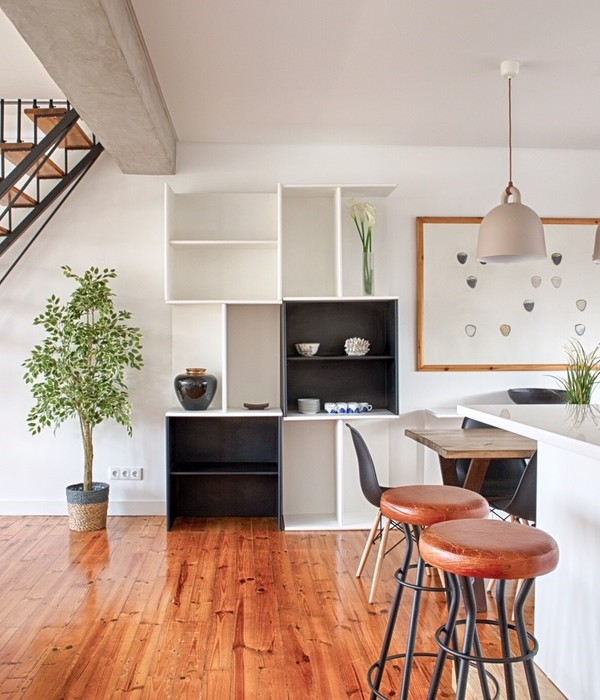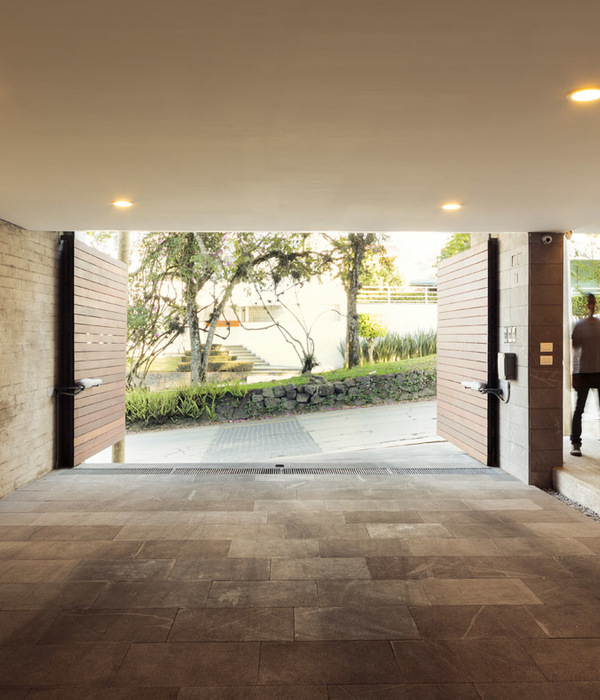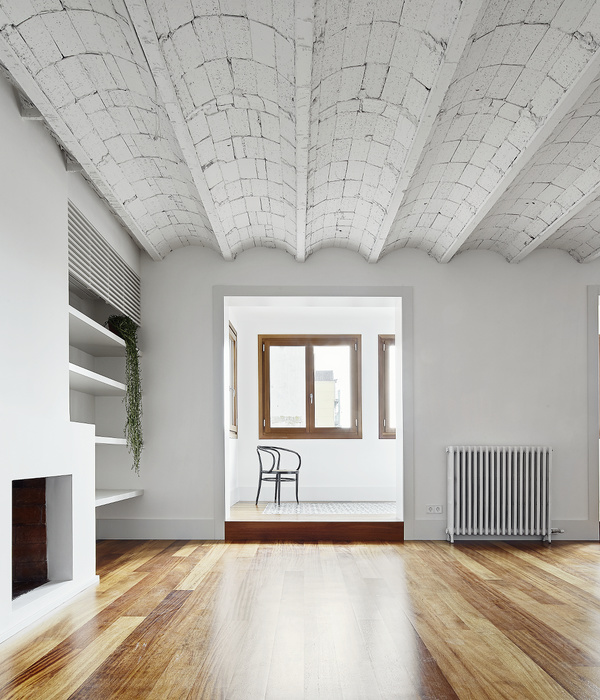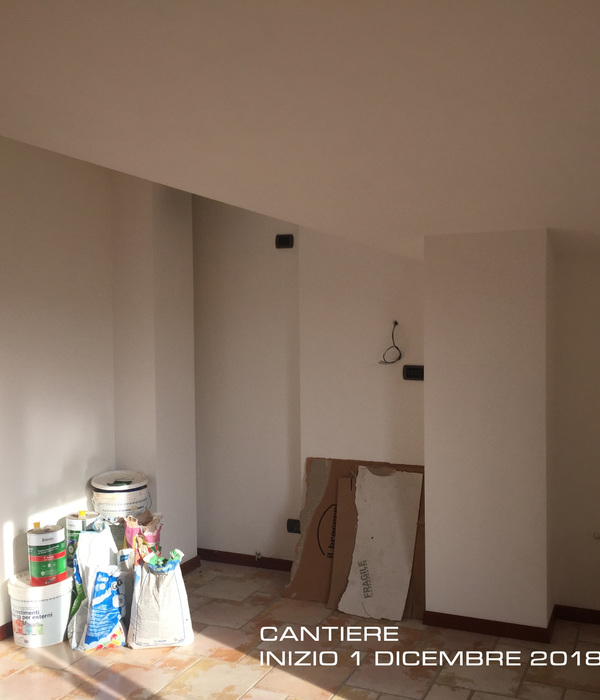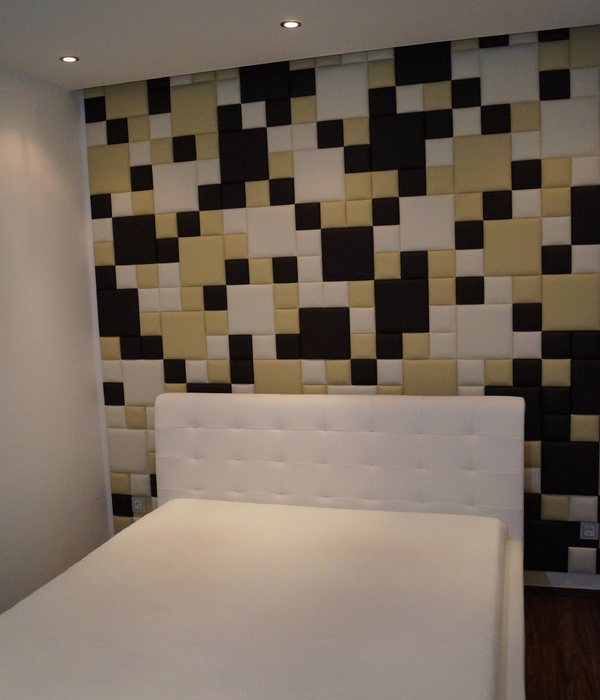Mafra住宅位于里斯本Palácio Nacional de Mafra历史宫殿旁。这座宫殿因其毗连的方济会修道院而变得广为人知,另一方面也令该项目在过去与现在之间创造出一种奇异的力量。
为了更加全面地完成项目,设计团队对住宅与宫殿间的距离、住宅周边不同类型的建筑以及旧住宅被荒废的立面等一系列问题进行了考量――它们均是推进住宅设计的关键因素。
▼场地环境,context © FG+SG
The Mafra House, located by the Palácio Nacional de Mafra, a national monument better known by the contiguous Convent of Franciscan friars, is a project that has created a singular mix of forces between the past and the present.
To be fully accomplished, the project considered aspects such as the palace’s proximity and the heterogeneous buildings that surrounds the house, as well as the ruined façade of the old house, a key element in the architectural development.
▼住宅外观,exterior view © FG+SG
设计的核心思路是充分利用遭到破坏的既有立面,使其在恢复之后,从视觉上将新住宅突显出来。设计的目标是:在周边住宅的多样性和场地毗邻国家历史建筑的位置特征之间找到平衡。
The central idea was to take advantage of the ruined pre-existing façade; a façade which, when recovered, visually highlighted the new house. The goal was to find an equilibrium, given the diversity of the houses in the surrounding area and the proximity to the national monument.
▼住宅和周边建筑,the house and its built environment © FG+SG
从零开始建造的Mafra住宅缩进于场地边界,与既有的废弃立面相脱离。住宅的外墙和旧的立面之间形成了一处空地,使新建筑得到了突显,同时也起到围合与保护的作用。
Built from scratch, the Mafra House appears recessed inside the plot and detached from the ruined façade, emerging a space between the two façades in which the old construction highlights and values the house itself.
住宅缩进于场地,与旧的立面之间形成了一处空地 © FG+SG
房子出现在场地的凹陷处,与破旧的立面分离
▼住宅与周围建筑和谐呼应,the project is wellfitted into the architectural surroundings © FG+SG
住宅拥有一个单一的、带有人字形屋顶的纯白色体量,给人以坚固稳重的感觉。三个庭院分别嵌入建筑的三个立面,在为住宅赋予节奏感的同时也柔化了其原先较为硬朗的边界。庭院的窗户均可以从外部打开。
The house is a single volume, totally in white colour and robust in appearance with gable roof and three patios, one patio per elevation that softens the solid house appearance by introducing rhythms to the construction through the visible recesses in the elevation planes which allowed the opening of sheltered windows from the outside.
▼三个庭院分别嵌入建筑的三个立面,one patio per elevation softens the solid house appearance © FG+SG
▼院内视角,view from the patio © FG+SG
▼后方立面,the rear facade © FG+SG
房屋的主入口设置在前廊,起到过渡新旧立面的作用。该空间构成了住宅中最具视觉趣味的部分,同时,考虑到马路上缺少人行路径,这样的空间也会让居住者感到更加安全。
The main entrance is made through an antechamber, which mediates the new and the old façades. This part of the house is the most singular for its visual interest, introducing, at the same time, more security to its residents in a street where there is no sidewalk.
入口立面,entrance facade © FG+SG
▼入口细节,entrance detailed view © FG+SG
尽管该区域的建筑背景较为多元,但它们都拥有一个共同的特征,即几乎全部只有两层楼的高度。在遵循这一特征的基础上,房屋增加了一个包含车库的地下室,且只能通过降低整个后方地块的高度来为进入车库的坡道上方设置窗户。坡道的设计还为北立面增加了一个入口,同时拓宽了旁边的街道,使车辆可以开进车库。二层空间同样保留了这一“空隙”,并设置了靠墙的台面。
Although placed in a diversified architectural context, there is a common feature to almost all the houses, which is the presence of the two floors above the threshold, a characteristic that this project respected, having been added a subbasement with garage, only possible by lowering the entire plot at the back allowing the introduction of windows open over the access ramp to the garage. The design of this ramp also includes a recess in the north façade, at the ground-floor level, widening the adjacent street to allow car access to the garage. On the first level, the floor plan also occupies this void, thus resulting in a console area.
▼从街道望向庭院,view to the patio from the street © FG+SG
▼楼梯间,circulation © FG+SG
楼梯间的一侧是起居室,living room is located at one side of the stair well © FG+SG
▼客厅细节,living room interior view © FG+SG
▼从客厅望向餐厅,view to the dining area from the living room © FG+SG
▼从楼梯间望向餐厅,view to the dining area from the stair well © FG+SG
位于楼梯间另一侧的厨房,kitchen, at the otherside of the stair well © FG+SG
套间和卧室,suite and bedrooms © FG+SG
▼浴室,bathroom © FG+SG
附近Tapada de Mafra公园的围墙为设计提供了灵感和机会,因为它能够与翻新后的旧立面形成完美的呼应。为了实现这一目的,设计团队将既有立面重新“打扮”了一番,恢复了原先的石砌元素并使其保持裸露的状态。
The nearby wall of Tapada de Mafra, served as a source of inspiration and an opportunity since it creates a perfect harmony with the refurbished old façade. To achieve this goal, the façade went through a make-up in which the stonework was restored, remaining visible the secular masonry.
▼住宅主立面,main facade © FG+SG
既有立面与新立面形成对话,the old facades dialogue with the new ones © FG+SG
该项目的设计重点在于创造一座既具有现代线条,又能从功能和视觉上适应其周边建筑环境的住宅;与此同时,旧的立面也留住了人们对于传统居住方式的想象。
The main concern in developing this project was to create a house with contemporary lines, functionally and visually fitted into the architectural surroundings, with the old façade leading to the imaginary of traditional houses.
夜景,night view © FG+SG
▼地下一层平面图,lower plan © João Tiago Aguiar
▼首层平面图,ground floor plan © João Tiago Aguiar
二层平面图,first floor plan © João Tiago Aguiar
▼东立面图,elevation east © João Tiago Aguiar
▼剖面图AA’,section AA’ © João Tiago Aguiar
▼剖面图BB’,section BB’ © João Tiago Aguiar
▼剖面图CC’,section CC’ © João Tiago Aguiar
Project name: Casa Mafra / Mafra House
Company name: João Tiago Aguiar, arquitectos
Project location: Lisbon, Portugal
Completion Year: 2020
Construction Area: 311m2
Participants:Responsible Architects: João Tiago Aguiar
Project team: Rúben Mateus, Susana Luis, João Nery Morais, Maria Sousa Otto, Arianna Camozzi, Samanta Cardoso de Menezes, Diogo Romão, Constança Lino, Francisco Duarte, Renata Vieira.
Client: PrivateBuilder: PMJ
Photography:Photograph credits: FG+SG – Architecture Photograph
{{item.text_origin}}

